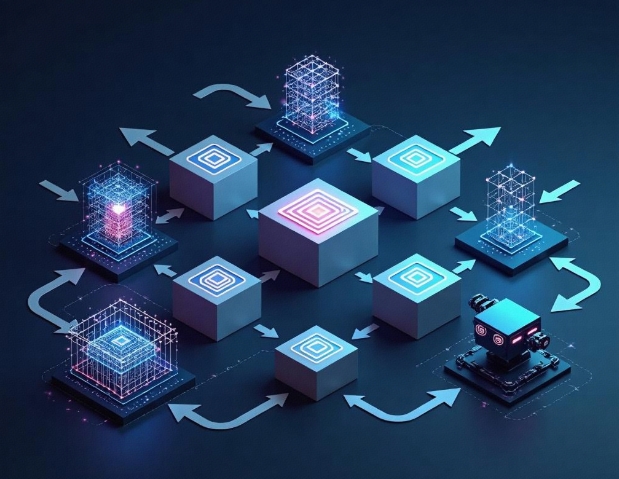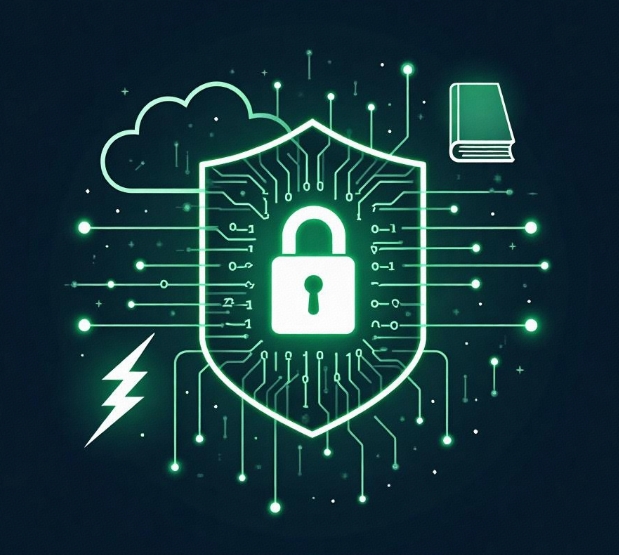Integration of Blockchain Development and Artificial Intelligence
- latest articles
- 1.DApp Development & Customization: Merging Diverse Market Needs with User Experience 2.Analysis of the Core Technical System in DApp Project Development 3.How to achieve cross-chain interoperability in Web3 projects? 4.How does the tokenization of points reconstruct the e-commerce ecosystem? 5.How to Set and Track Data Metrics for a Points Mall? 6.What is DApp Development? Core Concepts and Technical Analysis 7.Inventory of commonly used Web3 development tools and usage tips 8.Development of a Distribution System Integrated with Social E-commerce 9.Six Key Steps for Businesses to Build a Points Mall System 10.What is DApp Development? A Comprehensive Guide from Concept to Implementation
- Popular Articles
- 1.Future Trends and Technology Predictions for APP Development in 2025 2.Analysis of the DeFi Ecosystem: How Developers Can Participate in Decentralized Finance Innovation 3.From Zero to One: How PI Mall Revolutionizes the Traditional E-commerce Model 4.DAPP Development | Best Practices for Professional Customization and Rapid Launch 5.Recommended by the Web3 developer community: the most noteworthy forums and resources 6.From Cloud Computing to Computing Power Leasing: Building a Flexible and Scalable Computing Resource Platform 7.How to Develop a Successful Douyin Mini Program: Technical Architecture and Best Practices 8.Shared Bike System APP: The Convenient Choice in the Era of Smart Travel 9.How to Create a Successful Dating App: From Needs Analysis to User Experience Design 10.From Design to Development: The Complete Process of Bringing an APP Idea to Life
As technology continues to advance, blockchain and artificial intelligence (AI) have gradually become the most prominent technological fields today. Each possesses significant potential: blockchain, with its decentralized and tamper-proof characteristics, is widely applied in various industries such as finance and supply chains, while AI, based on technologies like machine learning and deep learning, is transforming industries from healthcare to autonomous driving. Although these two technologies may seem independent, their integration can unleash boundless innovative potential. This article will explore the integrated applications of blockchain development and AI, analyzing their interactions and potential in practical applications.
I. Basic Concepts of Blockchain and AI
1. Blockchain
Blockchain is a distributed database technology that achieves secure data storage and transmission through a decentralized network architecture, consensus mechanisms, and encryption algorithms. Its core features are transparency, immutability, and decentralization, which enable it to demonstrate immense application potential in industries such as finance, the Internet of Things, and supply chains. It provides a highly secure platform for data exchange, particularly suitable for scenarios requiring high trust and tamper-proof data.
2. Artificial Intelligence
Artificial intelligence is a technological field that simulates human intelligent behavior. Through algorithms and data training, it enables machines to automatically analyze problems and make decisions. Core AI technologies include machine learning, deep learning, and natural language processing, which have already permeated various industries, such as speech recognition, image recognition, and recommendation systems. AI can automate the processing of large amounts of data, significantly improving efficiency and reducing human errors.
II. Background of Blockchain and AI Integration
Although blockchain and AI each have broad application scenarios, they still face certain challenges in practical applications. The decentralized nature of blockchain makes data storage and exchange more secure, but its processing speed and efficiency are relatively low. AI relies on large amounts of data for training and optimization, but data acquisition and storage issues have always been bottlenecks in its development. Blockchain can address data privacy, storage, and sharing issues, while AI can enhance the intelligence level of blockchain networks.
Therefore, the integration of the two not only complements each other's shortcomings but also fosters new application models in multiple fields. Below, we will delve into several key application areas of blockchain and AI integration.
III. Application Areas of Blockchain and AI Integration
1. Data Privacy Protection
The development of AI depends on training and learning from large-scale datasets. However, data privacy has become a significant challenge in the era of big data. The decentralized nature of blockchain can effectively address data privacy issues. By using encryption algorithms, blockchain can ensure data sharing and exchange without exposing sensitive information. This approach helps AI obtain sufficient training data while ensuring user privacy security when handling personal data.
For example, blockchain can be used to create smart contracts that automatically execute agreements without third-party intermediaries, ensuring the legality and transparency of AI in data processing. This application is particularly important in industries with high data privacy requirements, such as healthcare and finance.
2. Smart Contracts and Automated Decision-Making
Smart contracts are self-executing, tamper-proof digital contracts that rely on blockchain technology to achieve decentralization and security. AI can help smart contracts make more intelligent decisions during execution. For instance, in the financial sector, blockchain-based smart contracts can automatically execute transactions and asset management, while AI can analyze market conditions in real-time and make automated buying and selling decisions.
By combining AI and blockchain, smart contracts can not only execute according to preset rules but also make flexible adjustments based on real-time data and market dynamics, thereby enhancing the system's adaptability and efficiency. This integration will significantly increase the automation level of blockchain systems, enabling the automatic execution of complex decisions in more scenarios.
3. Decentralized AI Market
Currently, many AI developments and applications rely on large companies and central servers, which centralizes AI capabilities and resources under the control of a single entity. Blockchain technology can provide a fairer and more open environment for AI developers and users through its decentralized network architecture.
In a decentralized AI market, AI models and algorithms can be shared and traded via blockchain technology. Developers can upload their AI models to the blockchain, and other users or companies can purchase or use these models, forming an ecosystem of shared resources. This not only promotes the popularization and application of AI technology but also accelerates the speed and efficiency of innovation.
4. Improving Supply Chain Management
The integration of blockchain and AI holds broad prospects in supply chain management. Blockchain can provide transparent and immutable transaction records, while AI can analyze and optimize supply chain processes. Combining their strengths can make supply chain management more efficient and intelligent.
For example, by recording transaction and logistics information at every supply chain stage on the blockchain, AI can analyze this data in real-time, predict potential supply chain risks such as inventory shortages or logistics delays, and provide optimization suggestions. This approach enables companies to manage inventory and allocate resources more accurately, reducing waste and losses.
5. Verification and Traceability of AI Training Data
The effectiveness of AI models largely depends on the quality and reliability of training data. However, in practical applications, data authenticity and sources have always been significant issues. The decentralization and immutability of blockchain technology can help verify data sources and quality, ensuring the reliability of AI training data.
By recording the collection, processing, and usage of data on the blockchain, AI developers can trace the origin of each piece of data, ensuring its legality and authenticity. This not only enhances the reliability of AI models but also increases user trust in AI applications.
IV. Challenges and Prospects of Blockchain and AI Integration
Although the integrated application of blockchain and AI has broad prospects, it also faces some technical and practical challenges.
1. Technical Complexity
Both blockchain and AI involve complex technical issues, and their integration requires developers to possess high technical capabilities. Effectively combining these two technologies and addressing technical bottlenecks in practical applications is a significant challenge.
2. Data Storage and Computing Power
AI requires large amounts of data for training, while blockchain technology itself has relatively weak data storage and processing capabilities, and its distributed storage method may lead to performance bottlenecks. How to improve blockchain's data processing capacity while maintaining its decentralized characteristics is a problem that needs to be solved.
3. Legal and Ethical Issues
The integrated application of blockchain and AI may involve issues such as data privacy and the legality of smart contracts. Ensuring that technological applications comply with legal regulations and avoid potential ethical problems is an urgent issue to address.
4. Market Acceptance
Although the integrated application of blockchain and AI has great potential in theory, how to promote it and gain widespread market acceptance in practical applications is also a challenge. Enterprises and users need to understand these new technologies and trust their security and reliability.
Nevertheless, with the continuous development and innovation of technology, the integrated application of blockchain and AI still has broad prospects. As more enterprises and developers invest in this field, more innovative application scenarios may emerge in the future.
V. Conclusion
The integrated application of blockchain and AI brings immense innovative potential to various industries. From data privacy protection to smart contract execution, and from supply chain management to the verification of AI training data, the combination of blockchain and AI is transforming the operational methods of various sectors. However, this technological integration still faces certain challenges that require efforts in technological innovation, legal safeguards, and market promotion. In the future, as technology matures and applications become more widespread, the integration of blockchain and AI is expected to drive changes in more industries, creating unprecedented opportunities and value.
-

How to achieve cross-chain interoperability in Web3 projects?
With the continuous development of WEB3 technology, Web3 has gradually become an···
-

Inventory of commonly used Web3 development tools and usage tips
With the continuous development of blockchain technology, Web3 has become a hot ···
-

Web3 development trend prediction: analysis of future technology directions and application scenarios
With the gradual development of blockchain technology, the concept of Web3 has m···

 Blockchain
Blockchain












